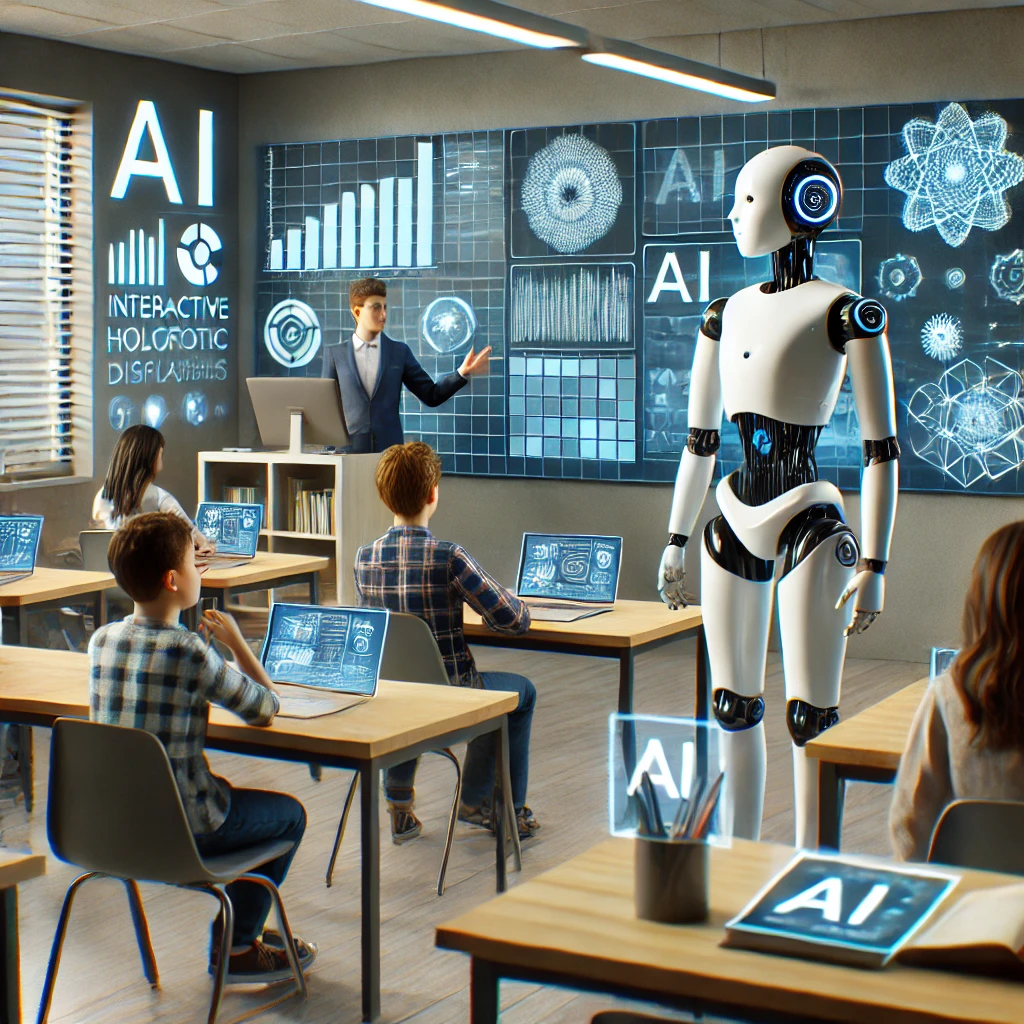Artificial intelligence is a new technology to many people, who may not know its various uses, both for the better and the worse. Its versatility is both celebrated and criticized. Recently, teachers have gotten more strict on preventing AI in the classroom, punishing any student who uses it. Students often view this as strict and unnecessary. They find AI to be helpful, but for what reasons? Using artificial intelligence in the classroom can lead students to misuse by producing AI-generated work students call their own. However, integrating ethical Artificial Intelligence in education systems would enhance creative ways to engage students, automate efficient grading systems, and assist students needing help outside of class.
The main AI concern for teachers is students using AI to do their assignments. Turnitin recently released data about their AI detection tool. In the first three months of its release, they found that 1 in 10 assignments had some AI detected, while 3 in 100 assignments were mostly AI-generated. Teachers discourage using AI because it violates academic integrity and is considered cheating. This could negatively affect critical thinking abilities, encourage an excessive dependence on technology, aggravate preexisting biases in data, raise privacy issues because of data collection, create disparities in access, and possibly decrease meaningful student-teacher interaction, which could result in a lack of social connection and the development of emotional intelligence.
Supporters of AI describe one potential benefit as its ability to create creative ways to engage students. Teachers can use AI for engagement in several ways, including generating interactive simulations, visual learning tools, and personalized learning specific to students’ interests. Personalization can help students better understand content by learning in a way that makes sense to them.
Many teachers agree that grading is a time-consuming process that takes away from other tasks. AI programs would easily be able to combat this by effectively grading with accuracy and precision to give teachers more time to focus on personalized learning. The Princeton Review suggests several ways AI can assist in grading.
Automated grading systems are capable of providing consistent evaluations for all. These programs can manage a large number of exams efficiently. This consistency helps eliminate the discrepancy that often arises from different human graders. Additionally, the capacity to give each student individualized feedback is where AI grading really shines. By closely analyzing students’ responses, these systems are able to determine their areas of strength and weakness. Automated grading systems can decipher written responses. By analyzing the quality, coherence, and relevance of student answers, these algorithms offer insights into the student’s grasp of the subject matter. Written responses can be processed by automated grading systems. These algorithms provide information on how well students understand the material by evaluating the depth, cohesiveness, and relevance of their responses
However, there are some limitations to AI’s grading capabilities. While it may be able to easily determine the accuracy of an answer on a quick assignment with only one correct answer, determining a specific grade for an essay would be more difficult. AI may not be able to decipher a more in-depth answer on an essay.
Some also suggest that AI can be used to assist students outside of class. At BASIS, the ideal thing to do is to go to student hours and get the teacher’s help personally. However, sometimes students aren’t able to attend due to issues such as transportation, etc. Not only that but also sometimes students might not realize they don’t understand a topic until they are doing their homework and it’s too late to go to student hours. At that point, AI would be able to help by either explaining a concept or creating practice assessment questions. However, there are other maybe more ethical alternatives, such as asking a friend or family member or watching a video online. In times of desperate need, AI could be a useful solution.
Several colleges have started to implement AI into their education. Ivy Tech Community College in Indiana, for instance, used AI in a pilot study to collect data from 10,000 course elements. The college assigned outreach staff to contact each of the 16,000 students who were at risk of failing within the first two weeks of the semester to provide support. Ultimately, 3,000 students were saved from failing. This example is a simple yet effective way AI can support students. Another example of how colleges use AI is Georgia State. Although “Pounce,” Georgia State’s AI-enhanced chatbot, was created as a tool to assist new students with registration and financial matters, it has been demonstrated to improve academic achievement. The university discovered that students were more likely to achieve a B grade or better if they used Pounce to receive texts on assignments, academic support, and course material. It assisted first-generation immigrant students in achieving final grades that were roughly 11 points higher than their classmates.
Artificial intelligence does not have to be used to generate assignment answers. It can be used to improve a student’s scores and understanding. Students can use it to get help outside of school when other help is unavailable. Teachers can use it to automate grading and create engaging lessons. Ultimately, there will be no standardized way to use AI, which can lead to misuse. Nevertheless, AI is only going to evolve so education should evolve with it.






